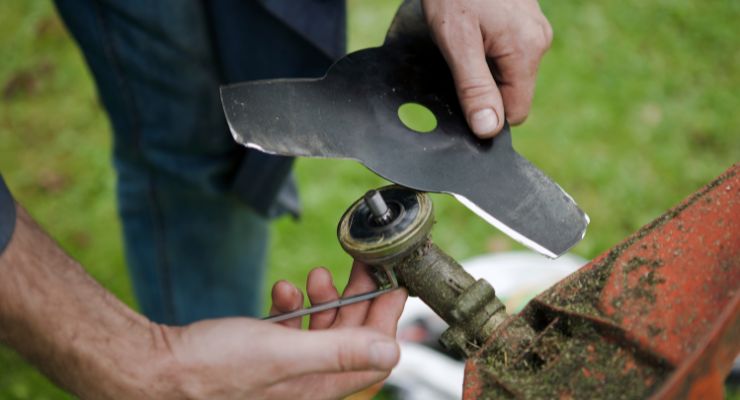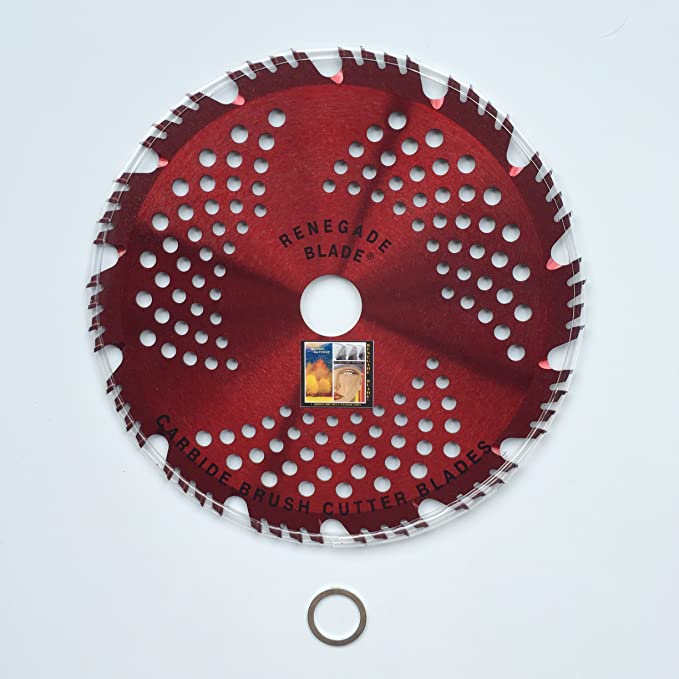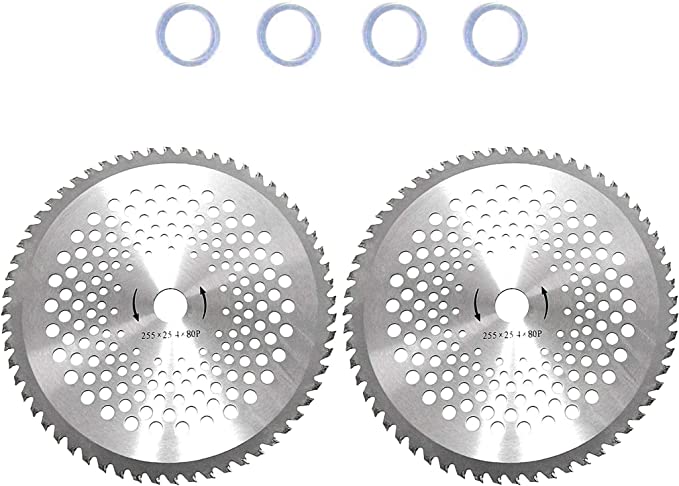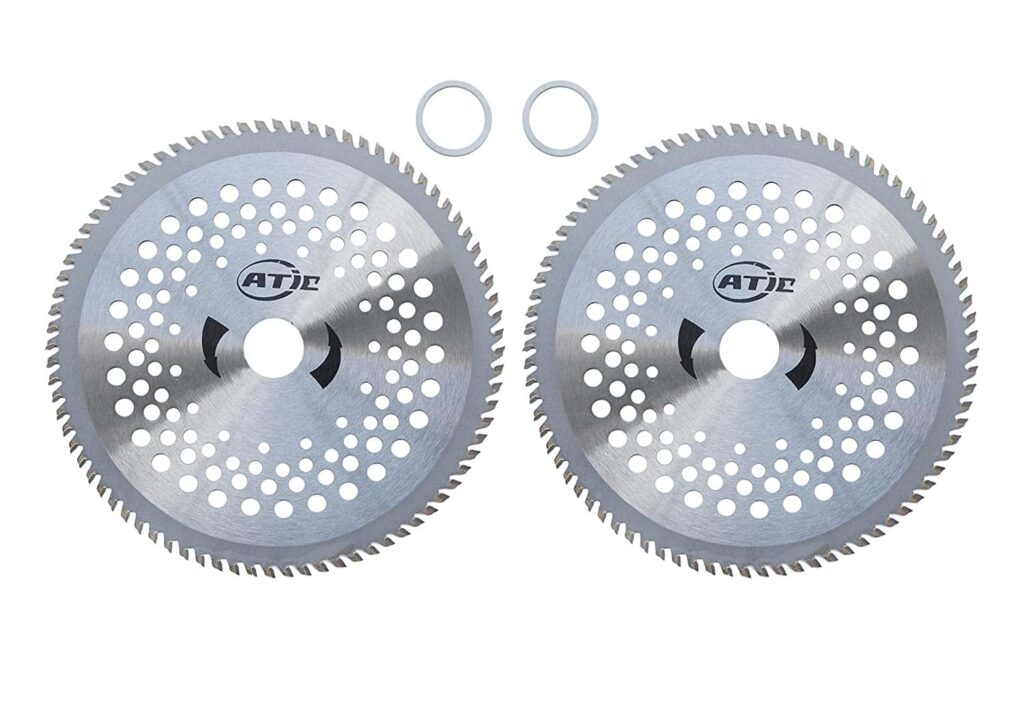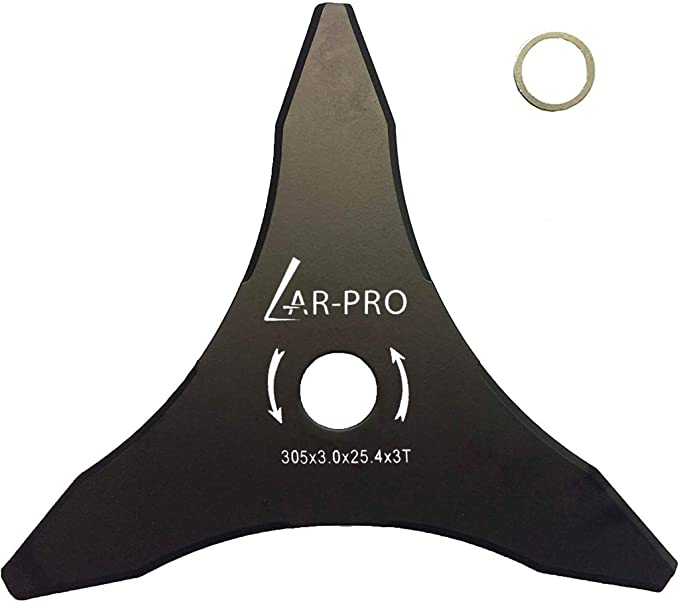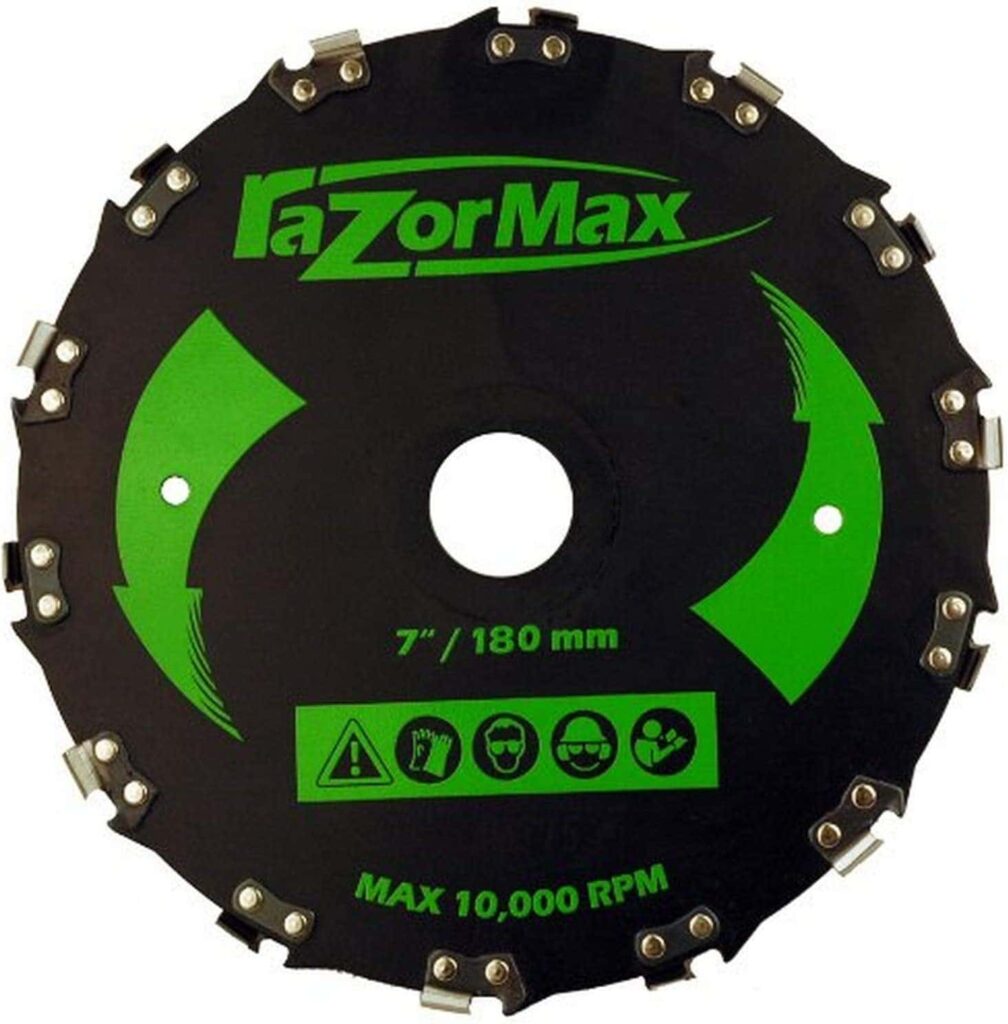The front of your house is generally what passersby see first, and if you care about looking good in the neighborhood, then there’s no denying that your lawn is one of the most important parts of the front of your house. A well-maintained lawn is a universal symbol of discipline, but more importantly, it shows that you care about your home and your neighborhood.
Unfortunately, keeping a well-maintained lawn isn’t easy if you don’t have the right tools. That’s where our best brush cutter comes in. The cutting ability of these tools not only makes lawn care a much easier endeavor, but such grass trimmers can even make lawn care enjoyable in their own way.
However, there are many things to consider when shopping for the best brush cutter blades, and it can be a bit of a hassle to make sure you get the best power tool. That’s why we’ve put together this list of our top choices, as well as a buying guide covering what to consider when shopping for cutter blades or a string trimmer.
The Best Brush Cutter Blades – Reviews
This is where we’ll cover the best cutter blades (or weed eater blades) available on the market right now, and why we think they have that distinction.
Renegade Blade Carbide Steel Brush Cutter
Renegade Blade is a brand that offers powerful, sturdy cutter blades with sharp teeth that get the job done. This particular product is a two-pack of carbide steel cutter blades that each have a diameter of 203mm.
The carbide tip of each blade is crucial, as they last a long time: about 10x longer than regular steel teeth when used as intended (as in, don’t whack it against any rocks!). This means the cutting edges work well and get the job done for far longer and with less damage than regular metal blades.
Finally, these blades for brush cutters are universal fit, meaning they’ll fit any string trimmer provided you have a blade adapter kit for it. And on top of all of that, these power tools are very affordable.
Pros
- Carbide steel blade is extremely durable
- Each metal blade is a universal fit for string trimmers
- Excellent for cutting small trees and thick, woody weeds, cutting edge
Cons
- Not useful without the correct arbor size trimmer, though this is a small concern
- The Carbide tip is excellent for foliage but breaks easily on rocks and metal
Atie 10″ Steel Blade Brush Cutter
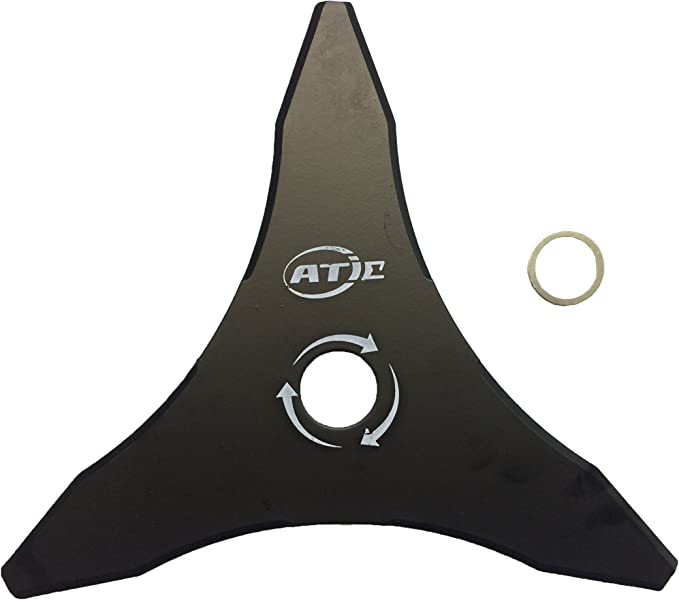
This quite affordable single steel brush cutter blade is a three teeth model with a diameter of 255mm, or 10 inches. It also has a 3 mm width, making this an ideal high quality brush cutter with knife blades.
The design is perfect for cutting through tough weeds, and it will work well against small trees and saplings as well. It can fit a 1″ or 20mm arbor.
The best part about this blade is definitely the teeth and overall design: it’s a powerful chopper that many customers have expressed satisfaction with in regards to taking out foliage, as well as lasting a long time despite hitting things like rocks or other tough obstacles.
On the downside, a few people mentioned that this brush blade was a bit heavy for them, but that of course is dependent on the strength of the individual. Overall, this blade from Atie has received excellent feedback from its many users, and it isn’t very expensive either.
Like most cutter blades these days, it is a universal fit provided you have the right adaptation kit for your brush cutter.
Pros
- Powerful blades chop dense bushes with ease
- Great durability, even shrugging off some tough impacts with rocks
- Very affordable, and is a universal fit for most brush cutters
Cons
- Attachment parts are sold separately
- Requires sharpening relatively frequently
AR-Pro 10″ Carbide Tip Blades for Brush Cutters
This pair of 10-inch brush cutter blades are made of stainless steel, which is heat and rust resistant. Like many brush cutter blades, they fit arbors of 1″ or 20mm.
However, they are not a universal fit, and are only designed to work with straight shaft trimmers of the following brands; Husqvarna, Stihl, Ego, Oregon, and Hitachi.
They should be able to fit any straight shaft brush cutter from any of those brands. Moreover, most customers say that fitting the blades to those brands of cutters was fairly straightforward and easy.
These blades for brush cutters are a little on the smaller side, meaning they don’t have as much chopping power, but the numerous teeth and high rotation speed means it works like a buzz saw through thick grass, woody weeds, and saplings.
Just make sure you don’t send it up against something too large and tough, and they’ll serve just fine. Other than these pros, AR-Pro is known for having a very useful and friendly customer service team across the entire US, and the fact that you get two blades at a pretty reasonable price is an excellent bonus.
Finally, the tips of these blades are carbide, so they work especially well against brush and tall weeds.
Pros
- Stainless Steel is both heat and rust resistant
- AR-Pro offers excellent customer service
- Excellent buzz saw type cutting makes gardening easy
Cons
- Doesn’t work with all trimmers, though it does with most
- On the smaller side, requires more precision cutting
Forester Chainsaw Tooth 9″ Blade for Brush Cutters
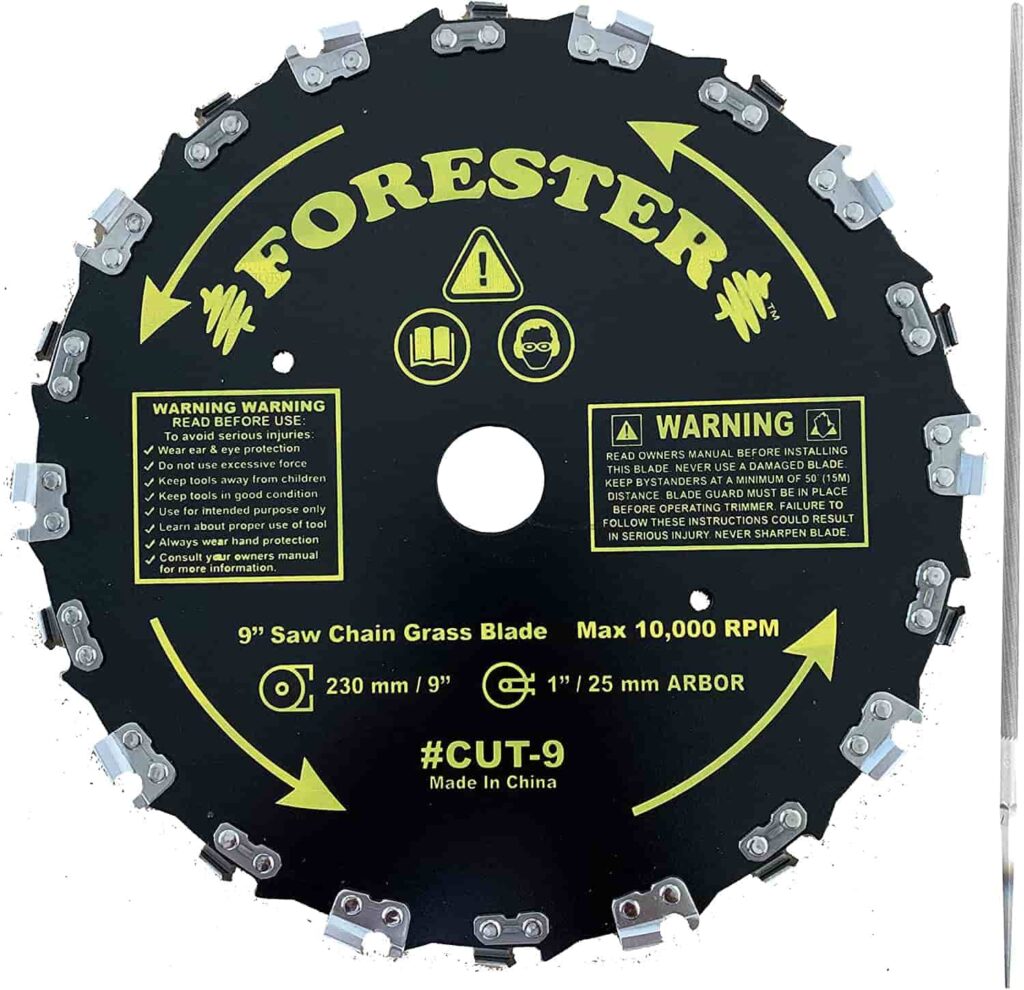
This single chainsaw teeth style blade is on the more expensive side, being the price of two of some of the other blades on this list. However, that’s because it is a particularly powerful and sturdy blade.
It gets the title of best brush cutter blade because of this combination of power and resilience. It is, after all, a steel saw blade that can spin at 1000 rpm. Because of that power, this blade is notably better at cutting large branches and really tough brush, and it maintains its sharpness especially well.
This makes the blade ideal for anyone who needs to cut through a whole lot of brush in as little time as possible, all in the name of efficiency. With a number of razor sharp teeth combined with a powerful trimmer, this blade is a monster.
That said, the power of this blade makes it potentially dangerous: you must make sure that you are being extremely careful anytime it is being used. Always cut with the blades spinning away from you, as doing so in reverse may pull the trimmer towards you, which would be very dangerous.
The fact that the blade is so powerful means it also has the potential to be very deadly, so it’s important to exercise extreme caution while in use. Other than that, it does come with a nifty file in order to keep the blade sharp, making it a great choice for heavy duty brush problems.
Pros
- Extremely powerful blade cuts through brush and tall grass – overgrown weeds
- Comes with a file to sharpen the blade for maintenance
- The blade is durable and capable of 1000 rpm
Cons
- More expensive than most other competitors, though this is due to the quality
- Potentially dangerous due to the saw design of blade and teeth, must be used very carefully when using these types of blades in brush cutters
Best Budget Brush Cutter Blades – Atie 8″ 80T Carbide Tip Brush Cutter
This double pack of high quality brush cutter blades includes two carbide tipped models with 80 teeth apiece, with 8″ in diameter. As always, carbide tipped teeth are supposed to last ten times longer than regular steel over a long time.
Of course, the high number of teeth also plays a role in this, as spreading the work across more of the cutting blade helps reduce the wear and tear on the teeth as individual parts of the blade.
As for the arbor, each blade will fit a 1″ or 20mm variant. They are also supposed to be a universal fit, meaning they can be attached to any brush cutter so long as you have the proper adapter kit.
All in all, reviews for this circular saw type blade are very good, with many customers attesting to the reliable teeth, only losing a few every few sessions. A blade of a lesser quality generally loses a few teeth every single session.
Naturally, that means this brush cutter can take on things as flimsy as weeds, but also stiffer competition like saplings and branches with relative ease. For the quality, the product is quite affordable, with each blade being only slightly more than $10.
You may be able to find cheaper elsewhere, but at some point, it’s worth paying for the best performance, or at least the most consistent performance for your dollar.
At the same time, some customers have mentioned that the circular saw blade has a lot of kick to it depending on the level of power the brush cutters use with it. That being the case, you may wish to consider a harness or T-handle when using a brush blade like this.
Pros
- Teeth are very durable and don’t break off easily
- The high number of teeth makes the blade last longer
- Very affordable brush cutters blade
Cons
- Lots of kick when used with a powerful brush cutter
- Requires an adapter kit to affix the cutter blade
AR-Pro 12″ 3 Teeth Cutter Blade
This 12″ diameter brush blade has three knife blades instead of a design with dozens of teeth. What this means is that the blade is very good at cutting through weeds and doing general trimming and pruning.
It could probably cut through thicker branches, but a saw type brush blade would be a better choice for that. The large diameter of the cutter blade means you need less overall precision to hit the things you are trying to cut, which of course makes it easier to take care of the lawn efficiently.
This blade can fit most straight shaft trimmers with an arbor of 1″ or 20mm. However, it is not universal and is only recommended for fitting certain brands, primarily Husqvarna, Stihl, Ego, Oregon, and Hitachi.
It is possible that the cutter blade could fit another brand but these are the specified recommended brands by AR-Pro.
It’s worth noting that this blade is on the slightly heftier side compared to some other types out there, and it’s also slightly more expensive too: but all in all, the combination of ease of use and efficient cutting makes them a contender for the best brush cutter blades out there.
Pros
- Large diameter requires less precision when gardening
- Tough carbon steel is durable and resilient
- Compatible with many string trimmer models
Cons
- The blade is slightly heavier than some models
- Slightly more expensive than some other models
Rotary 12580 Razor Max Brush Cutter Blade
This 7″ diameter brush cutter blade has a 1″ center hole, and it is a chainsaw style brush cutter blade, which makes it a pretty good choice for sawing through thick weeds or branches. Admittedly, it’s one of the most expensive choices on this list, but it is still one of the best.
That’s because a blade like this one, capable of operating at 10,000 RPM, is extremely powerful and can take on just about any type of brush with little trouble. It’s also quite lightweight, so it doesn’t add much heft to the end of your trimmer either.
It’s not all good news though, as the product doesn’t come with anything besides the blade, whereas some of the competition comes with a sharpening file or something a little extra for the cost.
But while this is true, the solid teeth and crazy power of this brush cutter blade go a long way in making up for something so minor, as it will make swift work of most brushes, on par with some of the best competition.
Unfortunately, the small diameter means you have to be a bit more precise with your work, but that isn’t much of a problem since the blade is very lightweight.
Pros
- Very lightweight, so it’s easy to use and wield
- Cuts through tall grass, dense weeds, or thick brush very easily
- Fits just about any trimmer
Cons
- More expensive than most single blades
- A small diameter means more precise cutting is needed
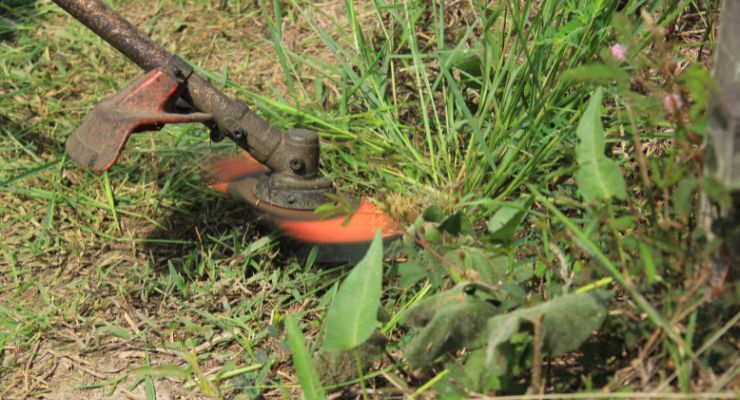
Buying Guide
Now that you’ve taken a look at the products that could take the title of best brush cutter blade, we’re going to talk about the aspects of these tools that actually need to be considered when shopping for one.
After all, how do you know which one is the best for you personally? This guide will help you answer that question.
Types of Brush Cutter Heads
As you might expect, one of the most important things to consider regarding a cutter blade is what type of blade it actually is. There are different blades, and knowing which is best for which situation will go a long way in making sure you get the best option for your personal needs.
Knife Blades
This brush cutter head function like a knife. A sharp edge on a piece of steel cuts through things in your garden. The knife edges come in many shapes, but all function like traditional knives.
Because of this, they are excellent to cut grass, but not as ideal to cut branches and other tougher obstacles. These blades dull relatively quickly and can chip when hitting a hard surface like rocks but are generally quite cheap.
Chisel Blades
A chisel blade doesn’t cut through things but rather shaves or ‘chisels’ through them with a larger number of a special type of teeth. This brush cutting blade functions similarly to a chainsaw, chipping away at a target rather than slicing clean through it. Chisel blades are great for chewing through tough, woody things like branches and small trees. The only downside is that they are generally more expensive.
Smasher Blades
The Smasher blades have a unique design which features a unique design that makes them ideal for mulching grass, shrubs, and trees.
When using the Smasher blade, it is important to ensure that you wear protective clothing such as gloves, goggles, and shoes as the blades may cause significant cuts or bruises if they come into contact with skin or clothing.
Additionally, it’s important that the bolts which hold the blade together remain tight at all times as loose bolts can cause vibration and eventually damage the machine itself. So fixed blades are very important safety measures.
The Smasher blade is widely used in agricultural settings where it can quickly clear large areas of land covered by weeds or dense vegetation.
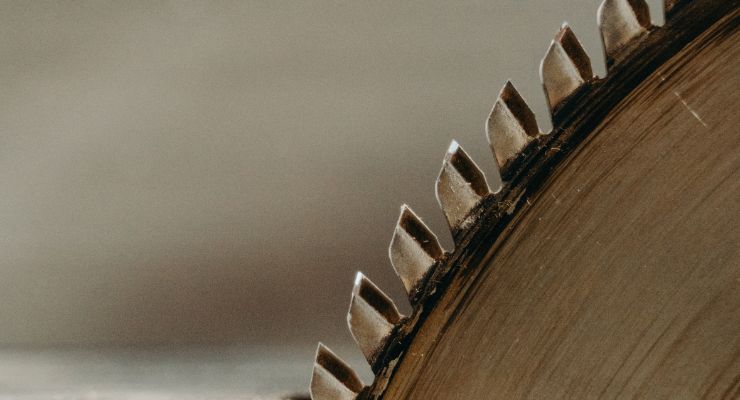
Mulching Blades
As I said earlier there are different blades, but this one is less common. By using a mulching blade, users can quickly and effortlessly cut through thick brush and weeds, while also providing nourishment to the soil beneath.
Unlike standard rotary mower blades or lawn mowers, these are designed with an angled shape that helps chop the material into fine pieces. As the blade spins, it creates a vacuum effect that lifts debris off of the ground before cutting it up into small particles.
The shredded material is then released back onto the lawn or garden bed where it decomposes into a nutrient-rich mulch that helps fertilize plants and soil below.
They can be used with only powerful machines as their vibrations are too heavy for average machines.
There are other types of cutting tools, but they are quite rare and generally not needed when either of the aforementioned blade types can get the job done. Moreover, all of the blades on this list were one of the types above.
Aspects of Blades to Consider
It’s not all about knife or chisel type. There are some other particular features of a brush cutter blade to consider as well. Taking these factors into consideration will help ensure you choose the best brush cutter blade for the best results.
Teeth
Put simply, more teeth, smoother power. That’s because the more teeth you have, the more evenly the process of cutting or chiseling is distributed.
So a blade with three teeth is only really suited for weeds and the like, while a blade with 40 or 80 is better suited for tougher jobs. If you want to cut through thick branches, you need a blade with more cutting teeth.
Diameter
The bigger the blade, the more powerful, but also the heavier and more unwieldy. If you are just cutting dense grass, there’s no need to get a huge blade, so don’t pay for more than you really need.
It’s important to choose a blade that is the right size for your machine, but moreover, a larger-diameter blade is almost always more powerful. That said you don’t always need more power, so don’t feel as though you have to choose the largest diameter all the time.
The blade that fits your tool is always the best choice. That said, if your weed eater can support various blade sizes, it comes down to what you think you need.
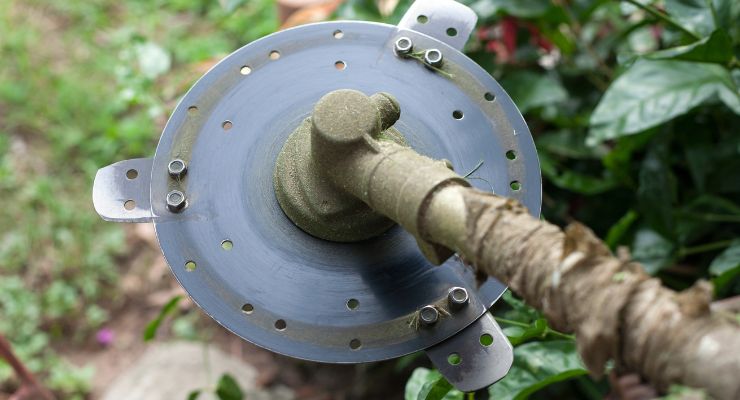
Arbor Hole Size
The arbor hole is where the blade attaches to your machine. This part is simple: just make sure the arbor hole of the blade you are buying is the same size as the arbor of your trimming tool.
Nearly every blade has an arbor hole size of either 1 inch or 20 mm. That being the case it isn’t particularly hard to find a blade that fits your arbor, since this is pretty universal. Still, it needs to be considered, just in case the specs don’t match up.
Material
As you may expect, the material used in making a blade goes a long way toward determining how useful it is. Sometimes it’s a matter of durability, other times it’s a matter of how easily it cuts or how easily the brush cutter blade can be sharpened.
Different materials have different benefits: stainless steel is easy to clean, but carbide is easy to sharpen. Either way, the most important thing is to always ensure you get steel, one way or another. A blade made of anything less isn’t the best option when it comes to gardening, and you want a blade that will stay sharp after use but also not shatter when it hits something sturdy.
Make sure to do some research on the quality of the blade you are looking at, wherever you are buying it from. Customer reviews often help with determining the best brush cutter blade.
Price
Always important is price. That said, the products in question are generally not that expensive, though, of course, some are still more expensive than others. Generally, you should be looking at $12-15 per blade, on average.
If you find a singular product significantly more expensive than that average range, it is either of much higher quality or a ripoff. Be sure to read customer reviews to find out which one it is exactly!

Conclusion
Ultimately, there’s a very wide array of choices out there when it comes to a cutting tool for your string weed eater. In order to get the best results, choosing the best blade is a major point to take into consideration.
While we only covered a few different types of cutting tools and brands in this article, keep in mind that, while they are pretty great, they aren’t the only choices out there. There are other brands and other types of cutting tools that may suit your needs even better than the ones we have listed here.
Just keep in mind all of the factors that were mentioned in the buyer’s guide, and finding the right tool for the job won’t be very difficult, whether it is for a standard brush cutter or a walk behind brush cutter.
